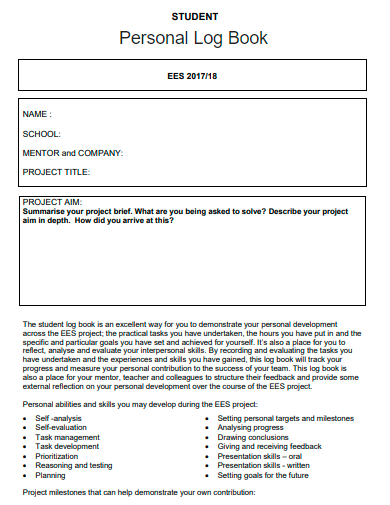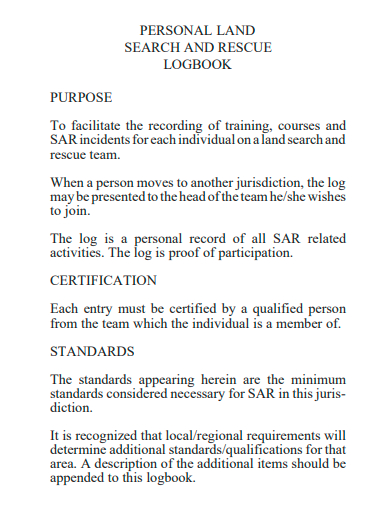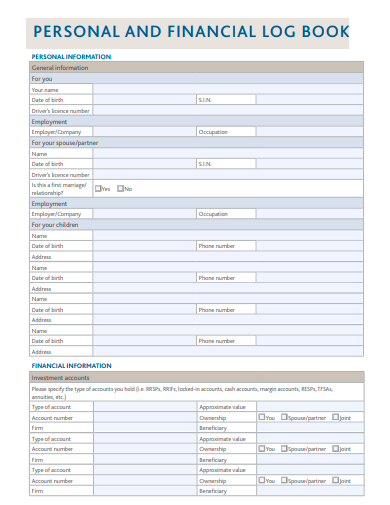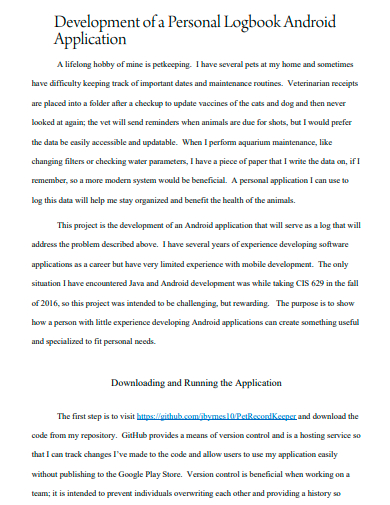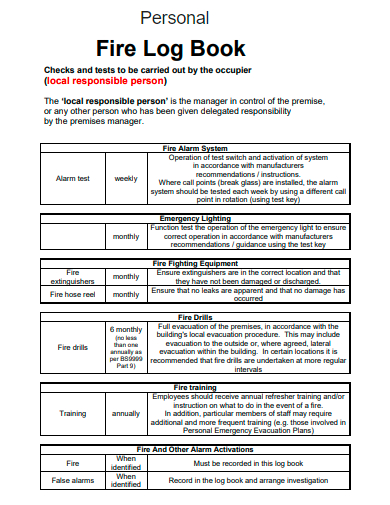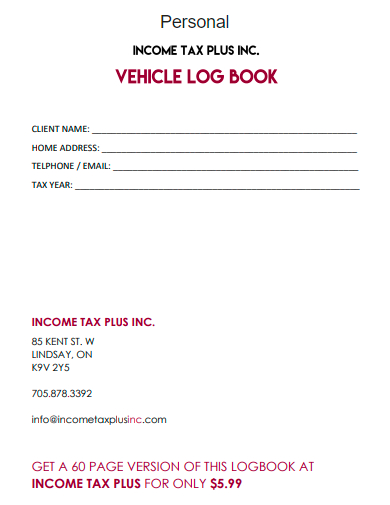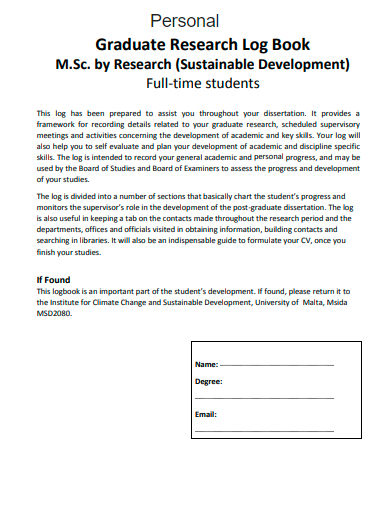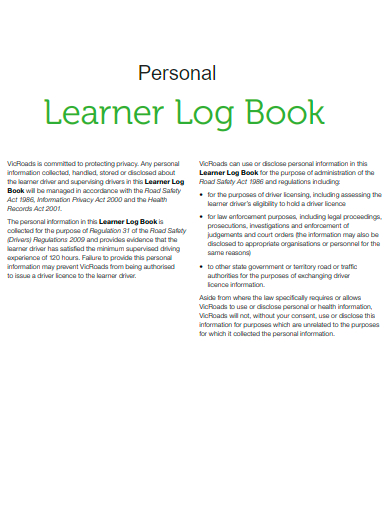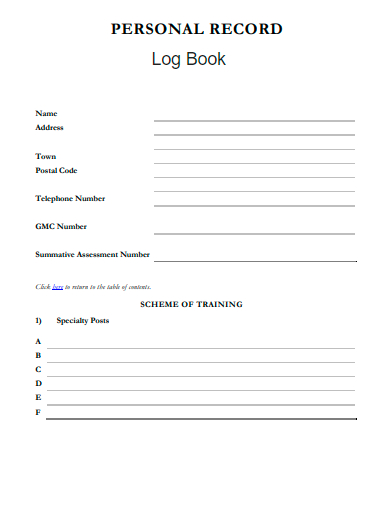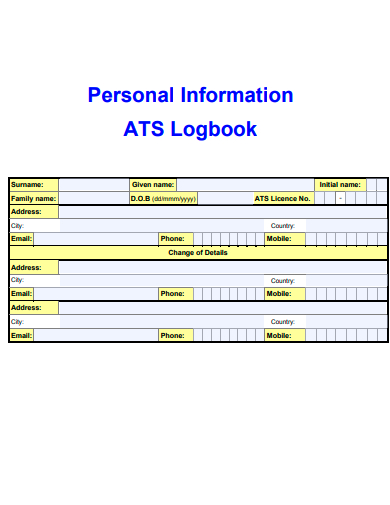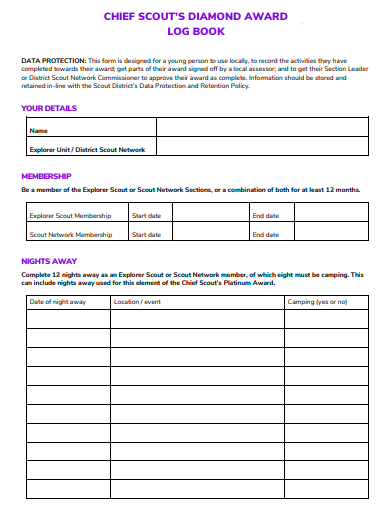Important inventory management, annual operating, and nautical events are logged in a log book for later reference. As a result of the numerous advantageous applications of these logbooks, numerous businesses have begun developing log book templates to keep track of work, weekly truckers’ miles and odometer, monthly training log, and other office-related activities. At first, these books are used to assist in calculating the distance that ships travel. In today’s world, people use it to keep track of a wide variety of items for their usage, including daily activities, daily sign-ins from customers and visitors, inventory, employee books, attendance sheet, and more!
FREE 10+ Personal Log Book Samples
1. Student Personal Log Book
2. Personal Land Search and Rescue Log Book
3. Personal and Financial Log Book
4. Personal Log Book Android Application
5. Personal Fire Log Book
6. Personal Vehicle Log Book
7. Personal Graduate Research Log Book
8. Personal Learner Log Book
9. Personal Record Log Book
10. Personal Information Log Book
11. Personal Log Book in PDF
What Is a Personal Log Book?
Individuals can keep personal logs, which are records of their day-to-day actions, including the time and date. They are ongoing activities planned with time throughout the day’s progression. Depending on the situation’s needs, this log is either professional or unprofessional.
How To Make a Personal Log Book?
Using personal logs is especially helpful for analyzing the effects of weekly projects and activities that concentrate on the individual’s personal development action. For instance, programs that aim to expand knowledge and skills are excellent candidates for this type of self-evaluation. Therefore, the steps that are outlined below can be followed to get started.
Step 1- Use a Software
The most effective method for ensuring that your logbook is as efficient as possible is to use software that comes equipped with either a spreadsheet or tables. It is possible that writing your log using a pen and paper is acceptable, but writing it by hand when it is going to be utilized professionally is an absolute no-no. Find a piece of software that you are comfortable working with, and installing it on your computer will allow you to finish creating a sheet or table as soon as possible.
Step 2- Design According to Purpose
When making your log, it is preferred if you know the objective of your logbook, such as understanding where it should be employed. For example, you may know the goal of your logbook by knowing where it should be used. This will make it easier for you to create an excellent design for your log. If you did this, establishing the appropriate log book with the correct format and design would be much simpler and take less time than it would if you did not do this.
Step 3- Include the Date and Time
When and how the personal log book should be utilized can vary depending on the nature of the business being conducted, the nature of the event being conducted, or the needs of the academic institution. Because of this, it is recommended to state the time and date on the log so that you will know when it will be employed and so that it does not get mixed up with any of your other trackers. In addition, this will ensure that the log is noticed among your other trackers.
Step 4- Utilize Key Codes
When you look at the key codes, which refer to the metrics or criteria in the log book and include phrases like “Today,” “Next Week,” and “Next Month,” you can get an idea of what the person was doing at the time the attendance was recorded. This is because the key codes include phrases like “Today,” “Next Week,” and “Next Month.” If you wish to categorize any kind of data, key codes are another useful tool.
What are the types of logbook?
It can be a personal logbook, attendance logbook, deck logbok, dynamic positioning logbook, etc.
What should be written in logbook?
Meetings you attended, completed tasks or projects, discussions with teammates, etc.
How can I make a log book?
Check to see that the pages of your logbook are numbered. If you want to use the first page or two for the table of contents, skip the first page. Every page should have a date written, and the time should be noted next to each significant entry.
A personal log book is a helpful tool that can be used to gather first-hand reports of particular actions or behaviors that might not ordinarily be easily accessible. They can help capture information that would be lost during an interview or a focus group discussion. The stories and narratives that may be gleaned from diaries, reports, and logs of specific events are compelling. They also have the potential to be a very beneficial tool for the respondent, as they offer the opportunity for the respondent to reflect upon the activity.
Related Posts
Employment Certificate
Teacher Lesson Plan
Deed of Assignment
Contract Termination Letter
Student Research Proposal
Diet Plan
Housekeeping Resume
Marriage Proposal Letter
Nursing Resume
Fund Transfer Letter
Purchase Order Cancellation Letter
Certificate of Service
Employee Leave Form
Visitors Log
Requisition Form

